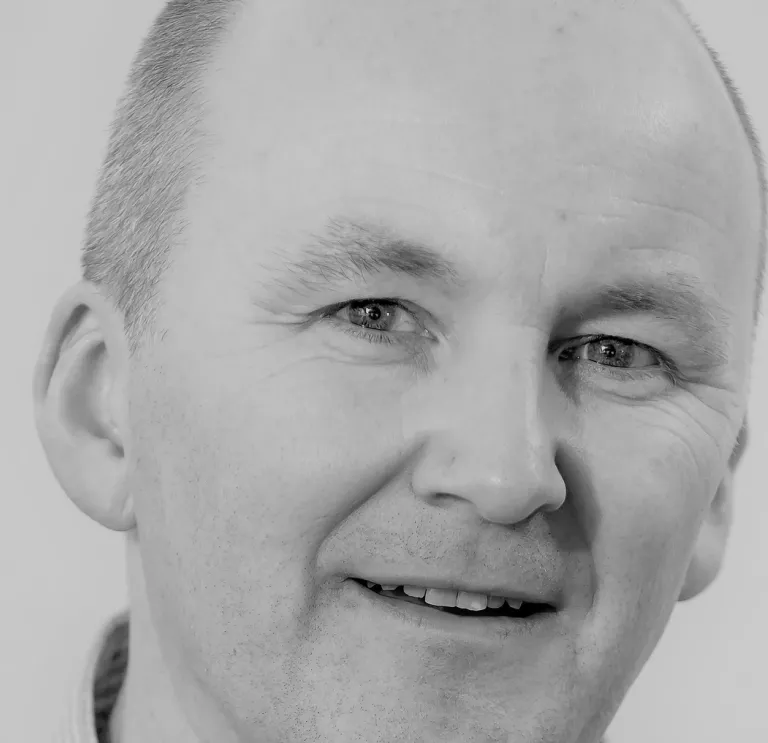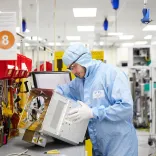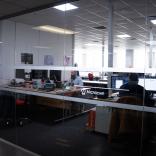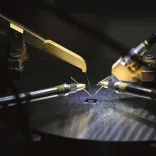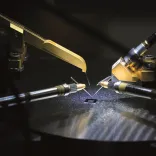If you want to meet a piece of Welsh tech, just pick up the phone. No, literally. The facial recognition system on your smartphone uses a remarkable bit of atomic engineering that has been pioneered in Wales.
How often do you get pinged in the face by a Welsh infra-red laser beam? That’s exactly what’s happening to a billion people around the world, a dozen times a day, every single time they pick up their smartphone.
If you were to dismantle your phone to find the bit of tech responsible, you’d a) ruin it and b) need a very powerful microscope. The critical compound semiconductor (CS) layer at the business end of your phone’s laser is around 20 atoms thick and was made by Cardiff-based IQE, the world’s biggest supplier of CS materials.
Your smartphone’s facial recognition system is one of is one of millions of CS applications that are buried deep inside billions of devices worldwide. They’re enabling a new generation of tech that’s faster, smarter and more versatile than anything that’s gone before.
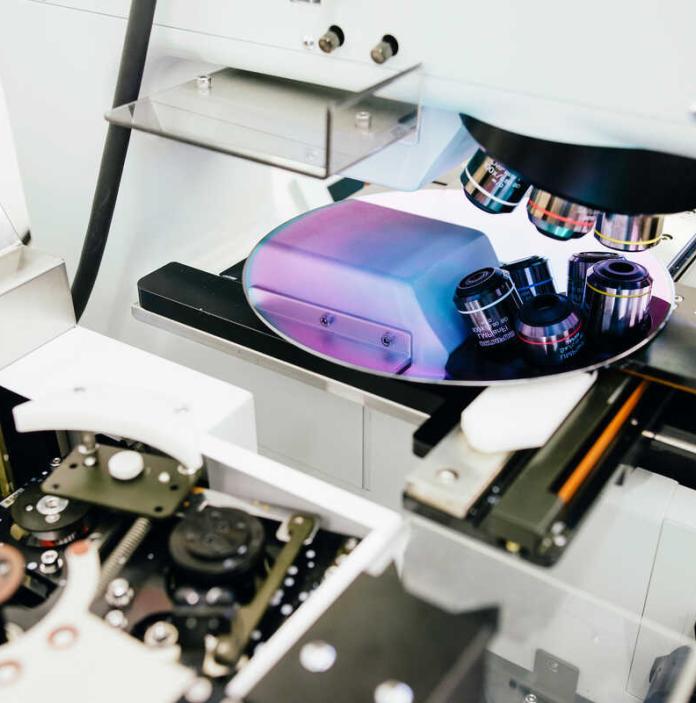
Your phone has roughly 100,000 times the computing power of the Apollo computer that landed man on the moon. We have the silicon chip to thank for this remarkable leap. But silicon has its limitations - and that’s where compound semiconductors come in. ‘Compound’ means that instead of using just a single material like silicon, you add layers of other semiconducting materials – things like gallium, arsenic, aluminium, indium and phosphorous. You build a wafer of different layers that might be just a few atoms thick. Your chip can now do much more. It can operate at higher speeds, generate microwave signals, work at much higher (and lower) voltages. It can emit and detect light, sense magnetism, and cope with radiation - which is very handy in space.
CSs have revolutionised the way that data is generated, transmitted and stored. They’re inside the next generation of telecom networks that’ll keep us all digitally connected, allowing billions of connected devices to talk to each other in ways we take utterly for granted. They’ll allow future tech to become just as commonplace. Autonomous cars are a great example: all those sensors that detect pedestrians and other cars, the processors that make crucial decisions in real time, the telemetrics that beam information between your car and solar-powered satellites – they all depend on CS tech.
They’ll play a vital role in our Net Zero pledge to cut carbon emissions, enabling the flexible energy networks and advanced power systems we’ll need. Your car’s batteries won’t need elaborate cooling systems – CSs can cope with high temperatures, remember – so they can be lighter, which means your car can go further, faster, using less power. While your car’s doing the hard work, you could be watching a film – or rather, it’ll be projected direct onto your retina by CS lasers.
Wales has been at the forefront of CS technology since IQE plc was founded in Cardiff back in 1988. They’ve grown into the world’s leading supplier of CSs, and ignited the world’s first compound semiconductor cluster, a collaboration of academic and business expertise that covers the whole CS supply chain, all based within a short drive of each other on the M4 corridor in South Wales.
Wales-based companies make the wafers, the machinery needed to make them, turns them into chips, and packages them into useable products. They all collaborate with universities at Cardiff and Swansea to drive research forward, and to train the skilled workforce they need. They’re represented by their own Research and Technology Organisation, CSconnected. They also have their own CS Catapult to develop and commercialise new CS applications.
They work with other Welsh tech clusters – Wales has notable expertise in cyber security, fintech, medtech, data science, clean energy, AI and robotics – to join the dots between different sectors. They all, in some shape of form, rely on foundations that CSs build on an atomic level.
The Welsh CS community is also helping to usher in the next leap in computing: the spooky powers of quantum technology. They’ve established a quantum foundry – QFoundry – to help develop the quantum photonic components that’ll be needed to harness the power of quantum tech and turn it into commercially viable products.
The world will soon have a trillion connected devices. Deep inside them, at an atomic level, they’ll all be whispering to each other… in Welsh.
To discuss opportunities in this sector contact us here
